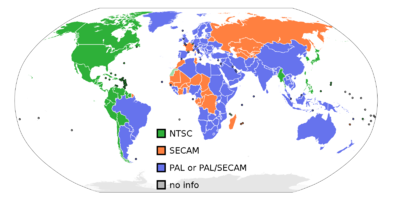| Welcome to SmashWiki! Log in or create an account and join the community, and don't forget to read this first! |
| Notices |
|---|
| The Skill parameter has been removed from Smasher infoboxes, and in its place are the new "Best historical ranking" and "Best tournament result" parameters. SmashWiki needs help adding these new parameters to Smasher infoboxes, refer to the guidelines here for what should be included in these new parameters. |
| When adding results to Smasher pages, include each tournament's entrant number in addition to the player's placement, and use the {{Trn}} template with the matching game specified. Please also fix old results on Smasher pages that do not abide to this standard. Refer to our Smasher article guidelines to see how results tables should be formatted. |
| Check out our project page for ongoing projects that SmashWiki needs help with. |
List of regional version differences (disambiguation)
- "Region" redirects here. For geographical areas related to competitive players, see Category:Smash regions.
Each game in the Super Smash Bros. series has its own list of regional version differences.
Many games developed in Japan usually see a Japanese release first. These usually have different text, names, sounds, and minor aesthetic changes from the NTSC and PAL versions. The initial Japanese release of the game may naturally come with some initial bugs, and minor to major changes may be seen in future regional releases.
Within the video gaming community, "NTSC" refers to the region of North America and small parts of South America and Asia. The term comes from the analog television encoding system National Television System Committee, the primary method of encoding analog TV for North America, South America, and Japan. As the Japanese NTSC system is slightly different from the international system, NTSC is most commonly used as shorthand for "the North American version of a game". Historically, North America is usually the second region for games made in Japan to be released; compared to the many European languages that require their own translations, only a few languages (English at most, and potentially Spanish and French) are necessary for one of the largest markets. As a result, NTSC releases are often the second version of the game, with major bugs fixed and possibly minor changes added.
"PAL" is a term referring to the region of Europe, Asia (minus Japan), Africa, Australia and some of South America. The term comes from the analog television encoding system Phase Alternate Line, the primary method of encoding analog TV for these parts of the world. PAL is most commonly used as shorthand for "the European version of a game". Historically, Europe is usually the third and final region for games made in Japan to be released, as games have to be translated into several languages, a process that takes both more time and more space than the NTSC region. In addition, due to cultural differences, the English translation cannot always be simply copied from the American version of the game. As a result, PAL releases are often the final version of the game, with all known bugs fixed and possibly significant changes added.
While analog connections are not commonly used in-game consoles anymore, with the Nintendo Wii being Nintendo's last console to support them, the terms "NTSC" and "PAL" are still commonly used to refer to differences between the North American and European versions of any particular game. In general, the NTSC version of each game is the standard used for competitive play on the international level. However, as different regional versions may contain significant gameplay differences, there is some debate about whether all regions should use the NTSC standard or their own respective regional versions (as is the case with the Japanese competitive scene for the original SSB).
- List of regional version differences (SSB)
- List of regional version differences (SSBM)
- List of regional version differences (SSBB)
- List of regional version differences (SSB4)
- List of regional version differences (SSBU)


